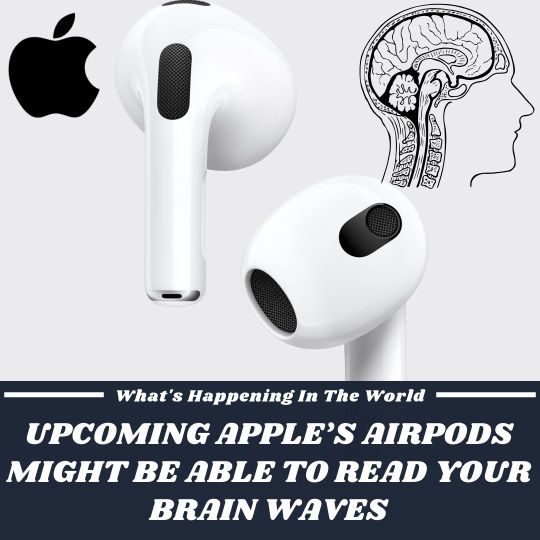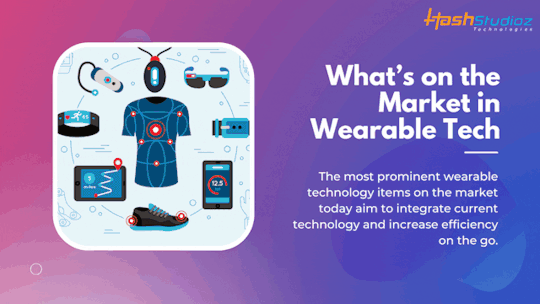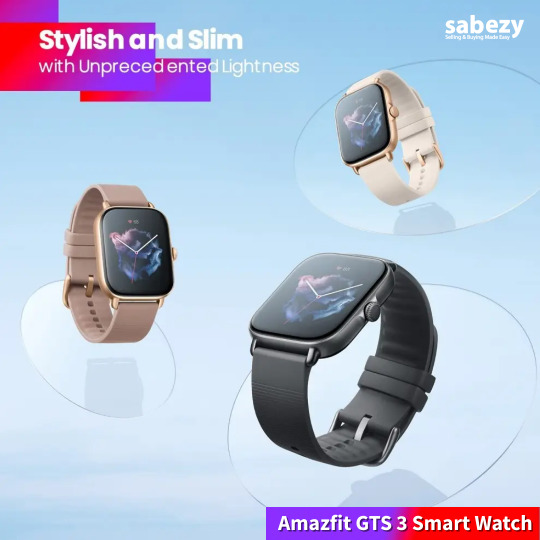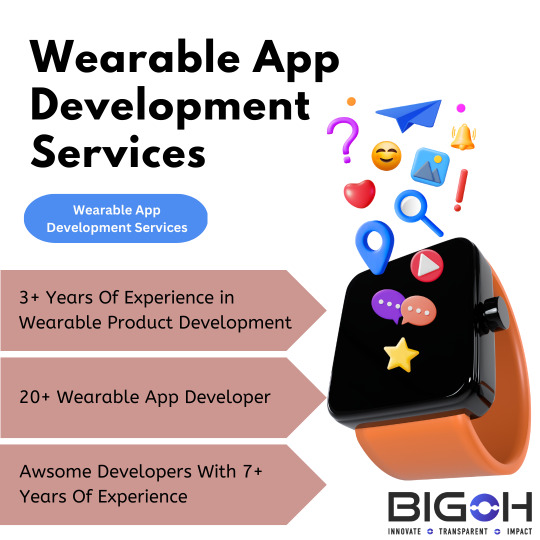#wearabledevices
Text

A recent #US Patent and Trademark Office grant suggests that brain wave reading capabilities may soon be available for Apple's #AirPods. With the use of small electrodes placed throughout the earphones, this cutting-edge technology will be able to track biosignals and provide features like GSR, BVP, EEG, EMG, and EOG data. Although this functionality is still in the patent stage, it shows Apple's dedication to making AirPods a multipurpose tool for health and wellbeing.
#usa news#news#world news#breaking news#global news#current news#apple#airpods#BrainWaveTech#AirPodsInnovation#ApplePatent#whatshappeningintheworld#BiofeedbackTechnology#WearableTech#HealthTech#BiosignalTracking#EEGData#EMGMonitoring#EOGTracking#HealthAndWellness#TechInnovation#WearableDevices#FutureTechnology#BiofeedbackDevices#MindReadingTech#HealthTechTrends#AppleInnovation#WearableHealthTech#TechPatents
0 notes
Text

🔰SICOT-PIONEER
🔆ABRAFITO: Artificial Intelligence and Wearable Devices in Optimising Rehabilitation Protocols
🗓️ Date & Time - Saturday 3rd February 2024, 6:30PM
💻 Click here to Watch : https://tinyurl.com/OrthoTV-SICOT-73
✴️Chairs
▪️ALINE MIRANDA - Brazil
▪️ALARIC AROOJIS - India
🔯Moderators
▫️SAMUNDEESWARI SASEENDAR - India
▪️SAYID OMAR AHMED - Somalia
▫️MUHAMMAD ZAIN-UR-REHMAN - UK
❇Speakers
🔺SOHEIL ASHKANI-ESFAHANI - USA
🔺SHAFI AHMED - UK
🔺SUHAIL CHUGHTAI - UK
🔺ANUJ PUNNOOSE - UK
🔺RAFAEL ALAITI - Brazil
✡TALKS
▪️Sensor technology: applications in monitoring joint functionality
Soheil Ashkani - Esfahani
▪️Artificial Intelligence and Orthoverse - Shafi Ahmed
▪️AI-powered gait analysis: precision in movement assessment - Suhail Chughtai
▪️Smart rehabilitation: integrating wearables into daily exercises - Anuj Punnoose
▪️Panel discussion - Rafael Alaiti (& all faculty)
👨⚕️ SICOT Education Academic Chair : GOWREESON THEVENDRAN
👨⚕️ SICOT President Elect : VIKAS KHANDUJA
👨⚕️ SICOT President : PHILIPPE HERNIGOU
🤝OrthoTV Team: Dr Ashok Shyam, Dr Neeraj Bijlani
📺 Streaming live on OrthoTV
www.orthotvonline.com
▶️ Join OrthoTV - https://linktr.ee/OrthoTV
#SICOTPIONEER#Orthopedics#AIinMedicine#WearableDevices#RehabilitationProtocols#OrthopedicSurgery#MedicalConference#OrthoTV#MedicalTechnology#HealthTech#AIinHealthcare#SICOT#MedicalEducation#DigitalHealth#OrthopedicResearch#OrthopedicCommunity#HealthcareInnovation#MedicalWebinar#SurgicalEducation#RehabTech#AIRehabilitation#OrthopedicExperts
0 notes
Text
#wearabledevices#wearables#wearabletech#innovation#technology#healthcare#wearabletechnology#smartwatch#wearabledevice#digitalhealth#dp#wearable#healthtech#medical#steadiwear#artificialintelligence#veteranaffairs#fitbitcharge#steaditwoglove#health#smartwatches#apple#webinar#android#device#wearabletechnologies#gadget#iot#prosthetics#medicaldevices
0 notes
Text
Say Goodbye to Doctor's Appointments: Wearable Devices are Here to Manage Your Health 24/7!
The wearable device market in patient management has been rapidly growing in recent years, as the technology has become more advanced and more affordable. Wearable devices are small electronic devices that can be worn on the body, typically on the wrist or as a patch, and that collect data about the wearer's health and activity levels. This data can then be transmitted to healthcare providers or other devices for analysis.
Write to us at [email protected] Learn how GRG Health is helping clients gather more in-depth market-level information on such topics.
Some of the major players in the wearable device market for patient management include Fitbit, Apple, Garmin, and Samsung. These companies offer a wide range of devices, from simple fitness trackers to more advanced medical sensors and monitors. As the market continues to grow and evolve, we can expect to see more innovative devices and applications that are specifically designed for patient management. The wearable device market in patient management has been rapidly growing in recent years, and it is expected to continue to expand in the future. Wearable devices have the potential to revolutionize healthcare by enabling remote patient monitoring, personalized medicine, chronic disease management, and prevention.
One of the key benefits of wearable devices in patient management is the ability to remotely monitor patients in real-time. This can be particularly useful for patients with chronic diseases or conditions that require frequent monitoring, such as diabetes, heart disease, or sleep apnea. Wearable devices can track a patient's vital signs, activity levels, and other metrics, and transmit this data to healthcare providers for analysis. This allows healthcare providers to detect issues earlier and provide more personalized treatment, which can ultimately lead to better patient outcomes and lower healthcare costs.
Another advantage of wearable devices in patient management is their ability to provide personalized medicine. By collecting data on a patient's health and activity levels, wearable devices can provide insights into individualized treatment plans and help healthcare providers to make more accurate diagnoses. For example, a wearable device that tracks a patient's heart rate variability can be used to identify stress levels and suggest stress management techniques, or a device that tracks sleep patterns can help diagnose and treat sleep disorders. Wearable devices can also be used for chronic disease management, which is a major challenge for healthcare systems around the world. Wearable devices can help patients with chronic diseases to manage their conditions more effectively by tracking their symptoms and alerting them to potential issues. For example, a wearable device that tracks glucose levels can help patients with diabetes to monitor their blood sugar levels and adjust their treatment accordingly, while a device that tracks heart rate can be used to monitor and treat heart disease.
Finally, wearable devices can be used for prevention, by identifying early warning signs of illness or disease. For example, a wearable device that tracks a patient's breathing patterns can detect early signs of asthma, while a device that tracks skin temperature can identify early signs of infection or inflammation. The wearable device market in patient management is expected to continue to grow in the future, as the technology becomes more advanced and more affordable. Key players in the market include Fitbit, Apple, Garmin, and Samsung, among others, who are developing a wide range of devices from simple fitness trackers to more advanced medical sensors and monitors. As wearable devices become more widely adopted by healthcare providers and patients, we can expect to see further innovations that will continue to transform healthcare and improve patient outcomes.
Further, there are several barriers to the wearable device market in patient management:
1. Limited Adoption: One major barrier to the adoption of wearable devices in patient management is the limited adoption of these devices by patients themselves. Many patients are hesitant to use wearable devices due to concerns about privacy, security, and data accuracy.
2. Cost: Wearable devices can be expensive, and many patients may not be able to afford them. Insurance coverage for wearable devices can also be limited, making them inaccessible to many patients.
3. Data Privacy and Security: There are concerns around the privacy and security of patient data collected by wearable devices. Patients may be hesitant to use these devices if they feel their personal health information is not adequately protected.
4. Data Accuracy and Reliability: The accuracy and reliability of the data collected by wearable devices can also be a barrier to their adoption. If patients do not trust the accuracy of the data, they may be less likely to use the devices.
5. Lack of Integration with Healthcare Systems: Another barrier to the adoption of wearable devices is the lack of integration with healthcare systems. Many healthcare providers may not have the infrastructure in place to effectively incorporate wearable device data into patient management.
Overall, while wearable devices have the potential to revolutionize patient management, there are several barriers that must be addressed in order to make them more accessible and effective for patients.
Visit our website now: https://www.grgonline.com/
0 notes
Text

Upgrade your style and performance with the latest in wearable tech!
Find the perfect wearable device for your lifestyle.
You can now take your game to the next level with cutting-edge features such as heart rate monitoring, voice commands, and virtual reality. Wearable devices are perfect for everyone, whether you're an athlete, music lover, or fashionista.
Explore the exciting world of wearable technology today and don't miss out on the next big thing in technology!
Connect with us for more-
Website: https://www.hashstudioz.com
Email: [email protected]
Contact: +91-9500 069 296, +1 (408) 757 0570
#Technologies#WearableTechnology#WearableDevices#VirtualReality#SmartDevices#LatestTechnology#HashStudioz
0 notes
Text
The Future of Healthcare - Innovative Technologies
As we enter a new era of healthcare, technological advancements are becoming a driving force in improving patient care and outcomes. From artificial intelligence (AI) to virtual reality (VR), healthcare technology is rapidly evolving, and the possibilities for innovation are endless. In this post, we will explore some of the most exciting technologies that are transforming the future of healthcare.
Artificial Intelligence (AI)
AI has the potential to revolutionize the healthcare industry by enabling faster and more accurate diagnoses, predicting patient outcomes, and automating routine tasks. For example, AI-powered diagnostic tools can quickly analyze medical images and identify abnormalities that may be missed by human eyes. AI can also help physicians personalize treatment plans based on patient data and medical histories.
Virtual Reality (VR)
VR has been used in healthcare for a variety of purposes, such as reducing pain and anxiety during medical procedures, treating phobias and PTSD, and providing immersive training for medical professionals. VR can also simulate medical scenarios, allowing physicians to practice complex surgeries and procedures in a safe and controlled environment.
Wearable Devices
Wearable devices, such as smartwatches and fitness trackers, have already made a significant impact on the healthcare industry. These devices can track vital signs, monitor activity levels, and provide valuable health insights to both patients and physicians. In the future, wearable devices may be able to detect early warning signs of diseases and enable remote patient monitoring, reducing the need for frequent doctor visits.
3D Printing
3D printing has the potential to transform the way medical devices and prosthetics are designed and manufactured. It allows for the creation of custom-made devices that are tailored to individual patients' needs, improving their functionality and comfort. 3D printing can also be used to create replicas of organs for surgical planning and medical training.
Telemedicine
Telemedicine enables patients to receive medical care remotely, using videoconferencing and other digital technologies. It allows patients to access healthcare services from anywhere, making healthcare more accessible and convenient. Telemedicine can also help reduce healthcare costs by eliminating the need for in-person visits.
In conclusion, innovative technologies are transforming the future of healthcare, offering new opportunities to improve patient outcomes, enhance the efficiency of healthcare delivery, and reduce costs. As these technologies continue to evolve, we can expect to see even more exciting innovations that will shape the future of healthcare.
#technology#artificialintelligence#virtualreality#wearabledevices#3Dprinting#telemedicine#patientcare#medicaltechnology#futureofhealthcare#digitalhealth
0 notes
Text

Gather real-world and real-time health data and integrate it into a patient's medical record.
Wearable-EHR interface represents new innovations, providing the opportunity to collect real-life and real-time health data with integration into a patient’s medical record.
Understand more about the Wearable Technology
#Techblocks#techblocksinnovation#techblocksretail#techblockshealthcare#productmarketing#wearabledevices#wearabletechnology#wearabletech#medicaltechnology#retailtechnology#bluetoothlowenergy#ble#bluetooth#smartdevice#wirelesstechnology
0 notes
Text
Huawei’s second generation version of their popular fitness tracker is designed for both sports and fashion – because why choose when you can have both?
#superwatches#HuaweiWatch#smartwatch#techblog#techreview#wearabledevices#healthyliving#wearabletech#watchesofinsta#newblogpostalert#smartwatches#techblogger#smartwatchreview#watchaddict#watchoftheday
0 notes
Photo

Buy Amazfit GTS 3 Smartwatch Online | Smart Wearables | Sabezy
Buy the new stylish Amazfit GTS 3 smartwatch. A slim & light smartwatch with a powerful & easy-to-use Zepp OS, 24H health monitoring, 150+ sports modes, and 12-day battery life.
0 notes
Text
Want to exploit the top-class automated software and products? Experience how VozoEHR facilitated virtual care and helped a US-based healthcare practice shine.
READ MORE: https://www.vozo.xyz/blog/success-story-how-vozo-made-virtual-care-a-reality-for-a-us-based-healthcare-practice/
#virtualcare#virtualhospital#telemedicine#cloudbasedsoftware#automation#AI#IoT#Ai#wearabledevices#connectedhealth#telehealth#RPM#remotecare#telehealthvstelemedicine#MHCha#mHealth#health20
0 notes
Link
Samsung is making a bold move into the burgeoning smart ring market with the upcoming Galaxy Ring. This innovative wearable promises to bring convenience and functionality to your fingertips, and Samsung is betting big on its success. Here's a deep dive into what we know so far about the Galaxy Ring, its ambitious production target, and its potential impact on the wearables landscape. A Production Target of 400,000 Units Signals Confidence A report by The Elec sheds light on Samsung's production plans for the Galaxy Ring. The tech giant is reportedly gearing up for mass production as early as May, with a staggering initial target of 400,000 units. This high production volume signifies Samsung's confidence in the Galaxy Ring's market potential. However, Samsung also demonstrates a measured approach. The company plans to adjust production volumes based on consumer response. This flexibility ensures they can readily adapt to meet market demand, even if it surpasses initial estimates. The Galaxy Ring's compact size and the absence of reported part shortages are expected to facilitate a smooth production ramp-up if demand surges. Medical Certifications May Come Later, But Interest is High While the Galaxy Ring might not launch with some of the advanced health-tracking features found in the Galaxy Watch series, such as blood pressure monitoring and ECG (Electrocardiogram) measurements, it's still generating significant pre-launch buzz. Obtaining medical device certifications for these specific functionalities can be a lengthy process. However, the Galaxy Ring's potential for health and wellness tracking, coupled with its sleek design, could pave the way for wider adoption of smart rings in the wearables market, potentially encouraging other manufacturers to enter the space. Unveiling the Galaxy Ring: Design, Features, and Battery Life Samsung officially revealed the Galaxy Ring's design and potential functionalities at the Mobile World Congress (MWC) earlier this year. While specific features remain unconfirmed, speculation suggests capabilities like ECG measurements, blood flow monitoring, contactless payments, and smart device control. The company has confirmed that the Galaxy Ring will be available in three color options (gold, silver, and black) and offer nine different sizes to ensure a comfortable fit for various users. Additionally, the Galaxy Ring boasts an impressive battery life of up to nine days on a single charge, minimizing the need for frequent charging. Compatibility and Availability An important point to note is that the Galaxy Ring is designed to be compatible with all non-Galaxy Android phones, offering greater user flexibility. However, iPhone users will have to wait a bit longer, as the Galaxy Ring won't support iPhone integration at launch. The official launch is expected to take place in July at Samsung's upcoming Unpacked event, where they will likely showcase their next generation of foldable smartphones. Following the launch, you can expect the Galaxy Ring to be available for purchase by August. The Verdict: A Bold Move for Wearables The Galaxy Ring represents a bold move for Samsung as it ventures into the smart ring market. With its sleek design, potential health and wellness features, and long battery life, the Galaxy Ring has the potential to disrupt the wearables landscape. The ambitious production target further underscores Samsung's belief in this new product category. While questions remain about specific functionalities and medical certifications, the Galaxy Ring is undoubtedly generating excitement. The coming months will reveal how consumers respond to this innovative wearable and whether it lives up to the hype. Frequently Asked Questions When is the Galaxy Ring expected to be released? The Galaxy Ring is expected to be officially launched in July 2024 at Samsung's Unpacked event. How much will the Galaxy Ring cost? Samsung hasn't officially revealed the pricing for the Galaxy Ring yet. What are the confirmed features of the Galaxy Ring? Samsung has confirmed the Galaxy Ring will be available in three colors (gold, silver, and black), offer nine sizes, and boast a battery life of up to nine days. Specific functionalities like ECG and blood flow monitoring are still under speculation. Will the Galaxy Ring work with iPhones? No, the Galaxy Ring won't support iPhone integration at launch. However, it will be compatible with all non-Galaxy Android phones. What is the significance of the 400,000 unit production target? The high production target signifies Samsung's confidence in the Galaxy Ring's market potential. It also demonstrates their ability to scale production based on consumer demand.
#ECGmonitoring#GalaxyRing#GalaxyWatchseries#Massproduction#MobileWorldCongress#samsung#SamsungDivesintoWearables#Smartaccessories.#smartring#TechInnovation#wearabledevice#WearableTech
0 notes
Text
Future of Wearable
Wearable technology has come a long way in recent years, with devices like smartwatches, fitness trackers, and VR headsets becoming increasingly popular...
More details Click Here

0 notes
Text
Best Wearable App Development Services: BigOhTech
BigOhTech offers wearable app development services to create custom solutions that work seamlessly across various wearable devices.

1 note
·
View note